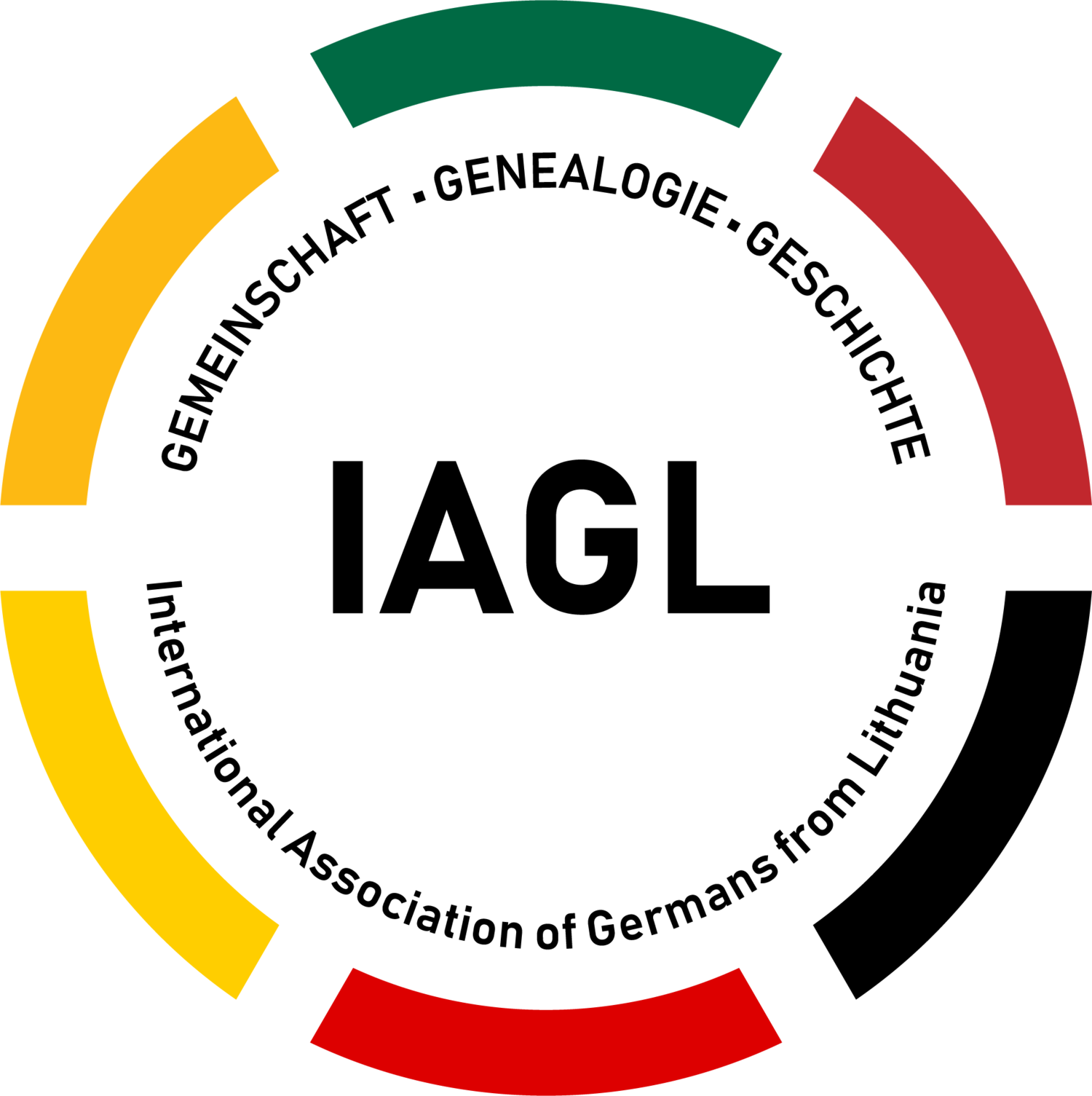Auswanderung Kartei der Litauendeutschen Finding Aid
Emigration Cards of the Lithuanian Germans
What is this collection?
The Auswanderung Kartei der Litauendeutschen (emigration cards of the Lithuanian Germans) is a collection of index cards created by the former Deutsches Ausland-Institut in Stuttgart. The index cards contain the names of Prussian citizens who requested to leave Prussia and emigrate outside its borders. The cards contain important genealogical information that will prove useful to family historians, genealogists, and other researchers.
Why are there no images of the cards available to view?
The IAGL received permission from the Bundesarchiv to index these cards. However, we did not receive permission to post the original images. Nevertheless, every card (sans cards that contained information on individuals that fall under Privacy Law) was indexed in its entirety, and all text on the card can be read in the “notes” section on the record result page in our index.
How do I search the collection?
This collection is filed under the record type “other” in our online index. You can check the index inventory page to see what dates are listed for a particular community and use those dates in the record index search.
Why was this collection created and how?
The cards were created by the former Deutsches Auslands Institut in Stuttgart, sometime in the 1930’s or 1940’s. The institute was created for the study of Germans and Germanism outside the borders of Germany. During the Nazi years, the institution was an organ of the Nazi administration. The exact reason behind the creation of the collection is not currently known. Analysis of the information contained within the cards, particularly those created before the 1930’s, shows that some information came from records created by the Prussian Government including tax and fee books from county administrations in East Prussia as well as passport records. These records pertained to those petitioning or requesting the Prussian government to emigrate to a foreign country. Later cards, created in the 1930’s, pertain mostly to German individuals already living in Lithuania and most of whom were actually born there. The method of collecting the information is not currently known to us.
What information is contained within the cards?
The information contained within the cards varies. Cards created before the 1930’s can include information such as when the record was created, the name of the individual emigrating, their date of birth, occupation, birthplace, place of residence, intended destination, emigration route, name of their spouse, their spouses birth dates, the name of any children, the dates of birth of those children, and even specific information as to why they wish to emigrate. Later cards created in the 1930’s contain information such as the date of the record’s creation, name of the individual, their birth date, place of birth, occupation, current residence in Lithuania, name and dates of birth of their spouse and children. Some cards may also contain names of parents or other relatives.
What years do the cards cover?
Since there are many cards that are undated, it is not exactly known which years the cards cover. Most date from the early 19th century and as late as 1938.
How comprehensive or complete is this collection?
Since the exact source of every card is not mentioned, it is impossible to know how complete or comprehensive the collection is. It should be assumed that the information and list of individuals is not exhaustive as not every German who came to Lithuania from Prussia did so officially.
Why are there some cards or individuals not indexed?
This collection does contain information on individuals born less than 100 years ago. In accordance with the Privacy Laws in Germany and Lithuania, the IAGL was not able to index or publish information on individuals born less than 100 years ago.
Where are the original cards located? How can I view them?
The original cards are kept at the Bundesarchiv in Koblenz, Germany and it is possible for individuals to request images of the cards directly from the archiv. Additionally, the LDS (FamilySearch.org) has microfilmed this collection and it can be viewed either at the Family History Library or at your local Family History Center.
Why isn’t my ancestor(s) listed?
There are many reasons why you may not find your ancestor(s) in this collection. It is not known how comprehensive or complete this collection is and whether all available Emigration records were utilized (or still survived) when the cards were created. Additionally, not all individuals who came from Prussia came to Lithuania officially, as doing so did require payment of a tax.
What does “Misc.” mean under “Location”?
Many cards are filed in our index under “Misc.”. This is a catch-all category for records in our database that:
Doesn’t have the location of the individual within the record identified
The location falls outside of the IAGL’s area of interest (i.e. locations outside the former Suwalki Gubernia)
The location is indicated on the record, but we were unable to identify the location on a map and are therefore unable to assign it to a location category
The location is broad (such as “Lithuania” or “Poland” or “Russia”
What language are the cards written in?
All of the cards are written in German, though name places in Lithuania/Poland/Russia can sometimes be in their Germanized or native languages.
Researchers are encouraged to use Google Translate or similar to translate what is written on the cards.
Some terms that researchers should be familar to aid in their search:
aus - German for “from.” This is where the individual was originally resident in
geb. - Short for Geboren which is the German word for “Born.” This usually comes before the individual’s place or date of birth. In the case of females, “geb.” will appear before their maiden name. For example: Anna Schmidt geb. Dettmann (Anna Schmidt nee Dettmann).
i. - Short for in which is the same as it is in English. In this context, it is usually used to signify a place of residency or a birthplace: Johann Schmidt geb. i. Stallupönen (Johann Schmidt, born in Stallupönen)
mit - The German word for “with.” This is usually in reference to who emigrated with the individual: Johann Schmidt…..mit Frau Anna geb. Dettmann… (Johann Schmidt…with his wife Anna nee Dettmann…)
verh. - Short for the German word Verheiratet which means “Married to.” This is used to signify that the woman was previously married to another individual. For example: Maria Dettmann geb. Schmidt vehr. Kowalski (Maria Dettmann nee Schmidit, [previously] married Kowalski)
Kinder - The German word for “Children.”
nach - In this context, this word means “to.” In other words, where the emigree was emigrating to. For example “Johann Schmidt aus Pillupönen nach Wischtiten.” (Johann Schmidt from Pillupönen to Wischtiten)
Polen - The German word for “Poland.” What was defined as Poland in the context of this collection is unknown. However, before 1815, southwest Lithuania did belong to Poland.
Rußland - The German word for “Russia.” What was defined as Russia in the context of this collection is unknown. However, before 1815, southwest Lithuania did belong to the Russian Empire.
ksp. - Short for the German word Kirchspiel or “Church Community.” This likely indicates to which church the individual belonged.
Krs. - Short for the German word Kreis. The equivalent in English would be “county.” The name of the village is usually written first, followed by the word Kreis then the name of that Kreis: Grigalischken Kreis Stallupönen ([village of] Grigalischken [in the] county [of] Stallupönen)
I believe there is an error on the record detail page!
We have done our best to transcribe all information on these cards accurately. If you spot an error or if you think a record has a location miscategorization, use the link at the top of this page to contact us.

